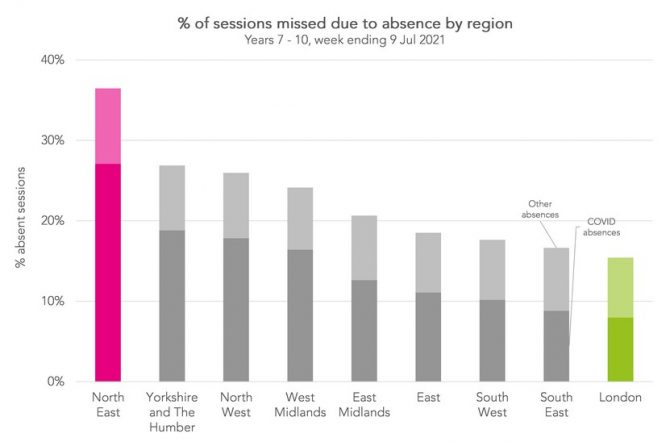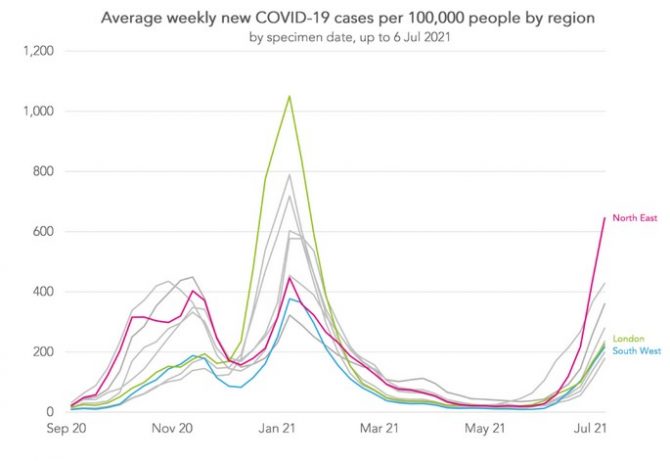Secondary pupils in parts of northern England are more than three times as likely to miss classes while they self-isolate as their peers in London, according to new figures.
The average pupil between year 7 and year 10 in a sample of north-east schools missed more than a third of their time in school last week.
By contrast the average pupil in London was absent from 15 per cent of all “sessions”, the half-days used in attendance data.
The statistics are based on analysis of more than 2,000 secondary school registers by FFT Education Datalab. They provide fresh evidence of rising absences and the disparities between different areas, reflecting regional trends in increased Covid cases as restrictions ease.
Nationally, pupils missed 21 per cent of sessions last week, up from 17 per cent a week earlier and far higher than the average secondary absence rate of 6 per cent in summer 2019.

The 37 per cent rate for the north-east was the highest of any region, followed by Yorkshire and the Humber and the north-west.
The capital’s absence rate was the lowest, followed by the south-east, the south-west and then the east of England, which all recorded fewer than 20 per cent of sessions missed.
Absences were higher week-on-week in every region, however, rising fastest in the north-east and eastern England.
The figures are for all absences, rather than only those officially classed as absences in “circumstances relating to coronavirus”.
Researchers said the government’s definition of such Covid-related absences only included pupils self-isolating, sent home in isolating bubbles, quarantining after travel and shielding, whereas pupils with confirmed cases of Covid are categorised as absent due to illness.
But the same regional patterns are clear for narrowly-defined Covid-related absences as for all pupils missing. Pupils in north-east England are the most likely to be self-isolating, quarantining or shielding (27 per cent of sessions), more than three times as likely as their peers in the capital (8 per cent).
The national average was 13 per cent, up from 10 per cent a week earlier.
Authors Katie Beynon and Dave Thomson said in a blogpost the data correlated with wider regional data on Covid’s greater current prevalence in much of northern England.
ONS figures show cases rising in every region in the week to July 3, but the highest proportion of people testing positive was in the north-east and north-west.
“We saw in the autumn term how schools in the north initially had higher absence rates but this changed dramatically towards the end of term as the alpha variant of COVID took hold.
“Unfortunately, in the past few weeks we have seen a similarly dramatic acceleration, particularly in the north east where absence levels are now higher than they were in London and the south east at the end of the Autumn term.”

The most recent official figures for the week before last show more than 600,000 or 8.5 per cent of pupils of all ages absent for Covid-related reasons.
It marked a 66 per cent jump on the previous week, and the highest Covid-related absence rate seen since schools reopened more widely in March.
It comes as health secretary Sajid Javid confirmed on Monday step 4 of easing Covid restrictions will go ahead on July 19, spelling an end to masks, school bubbles and contact tracing in schools.
The authors conclude: “We will see the impact this, and the summer holiday firebreak, has on absence in September.”








Your thoughts